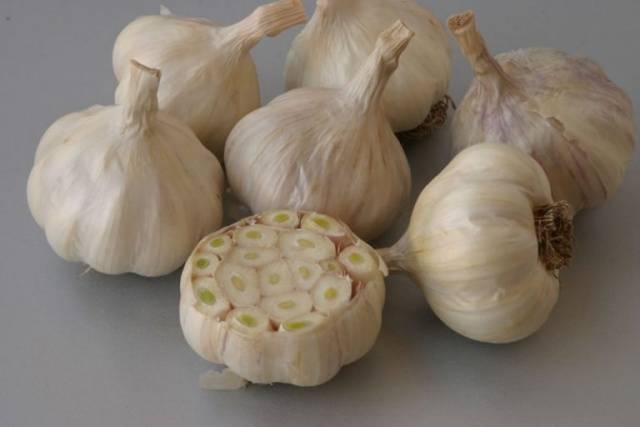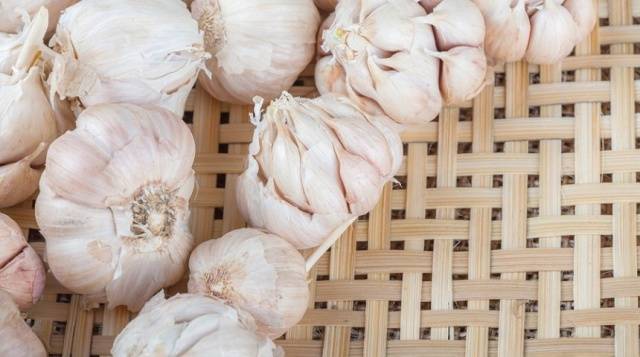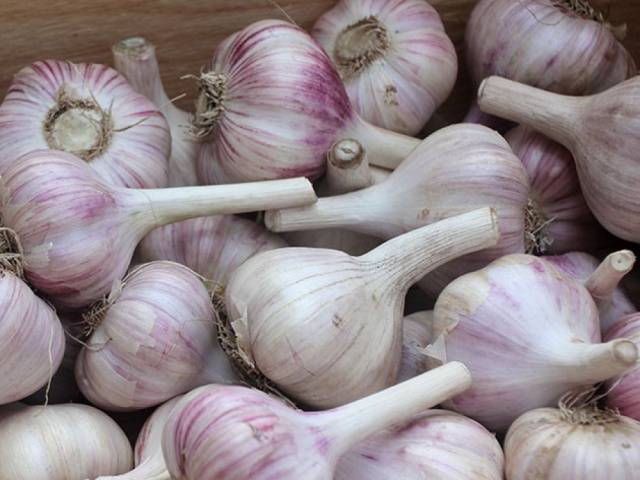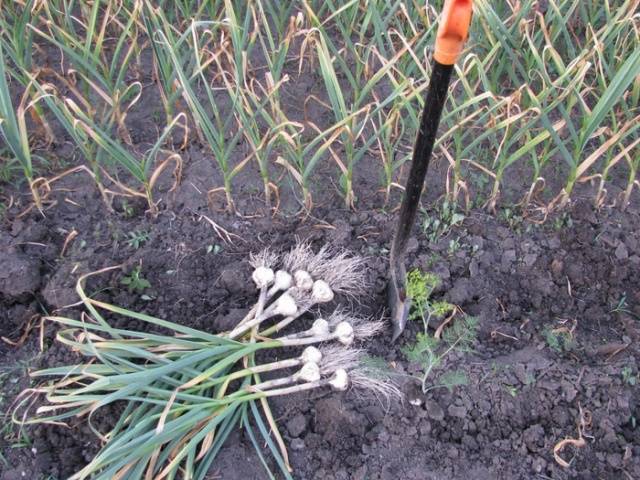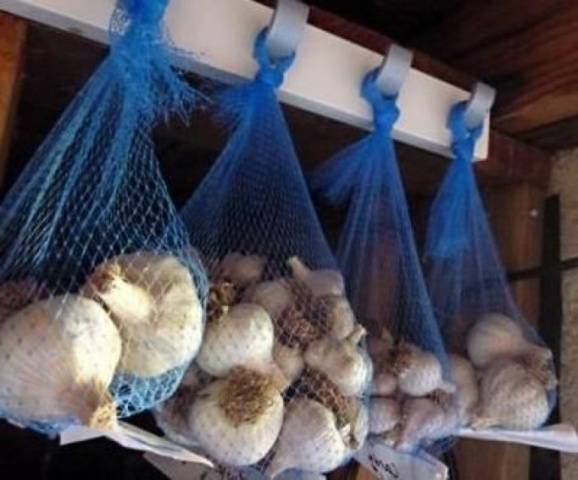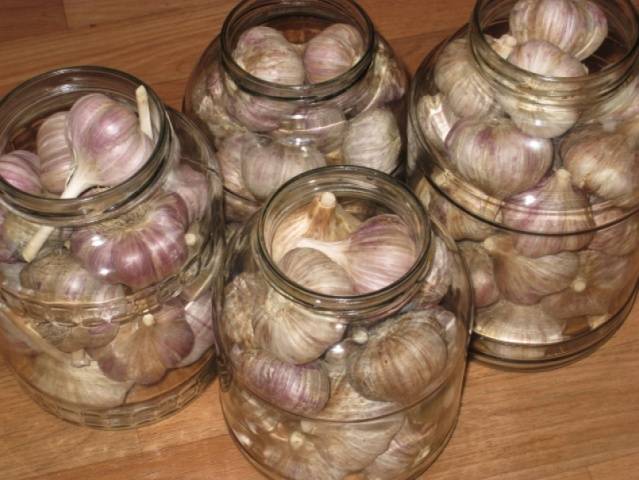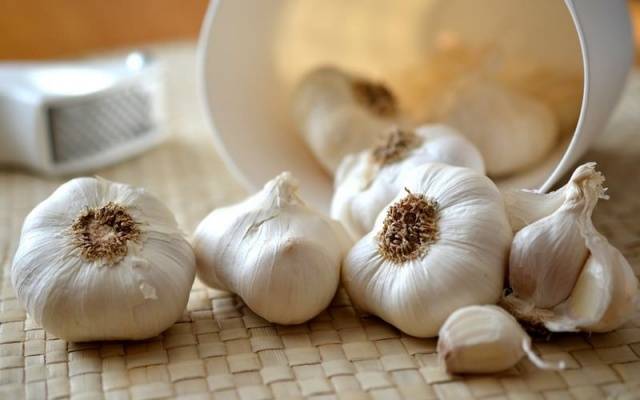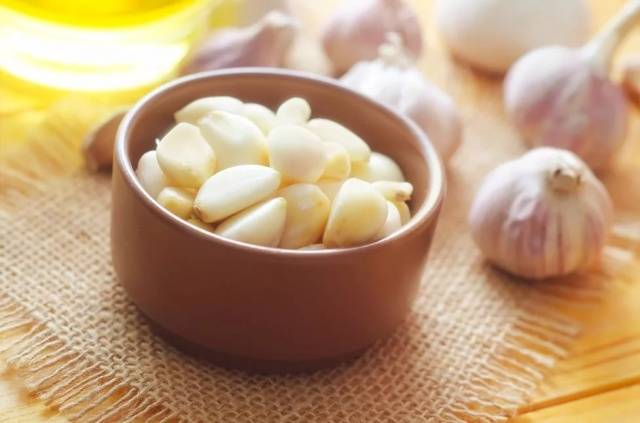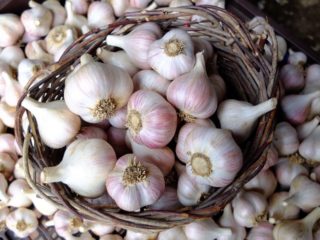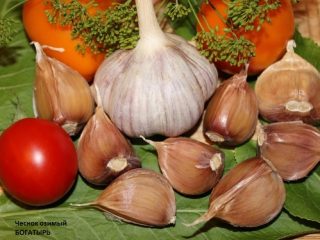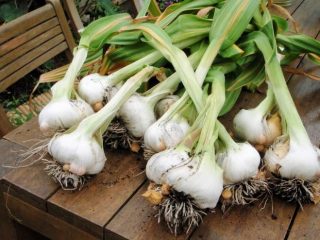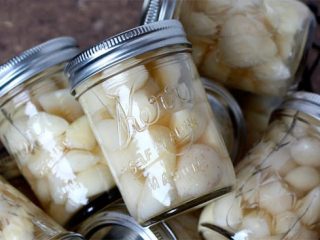Content
Everyone knows about the benefits of garlic. It is a natural antiseptic and antibiotic, an irreplaceable seasoning. Especially in demand during the autumn-winter colds, as well as during the conservation period. Therefore, it is important not only to grow a vegetable, but also to preserve it for a sufficiently long period.
Types of garlic and popular varieties
There are 2 types of garlic: spring or summer and winter or winter. If the garlic is planted in the spring, and the harvest is harvested in the second half of summer, then this is a summer type of garlic. It has many teeth, which are located in several rows, does not have a stem, does not form an arrow. Spring garlic is stored better than winter garlic.
Winter garlic is planted in the fall, shortly before the onset of cold weather, garlic has time to build up the root system and so goes into winter. In the spring it starts to grow. The crop is harvested in late July - early August. Winter garlic Forms from 3 to 6 cloves, and they are very large, have a pungent taste. They are arranged around the stem in one row.
The most reliable varieties of summer garlic suitable for storage are distinguished:
- Abrek - mid-season variety, white teeth, dense spicy taste. It is very well stored and gives high yields, the bulb weighs up to 45 g;
- Sochi-56 - a rapidly ripening variety, resistant to climatic changes, viruses, fungi. The bulb weighs approximately 45 g;
- Ershovsky - mid-season variety, has a high degree of preservation, can be stored for more than six months, the bulb is round, slightly flattened, its weight is 40 g, the taste is medium spicy;
- Porechye - has a rounded, slightly flattened onion with white scales, its weight is 25 g, it is stored for more than 7 months;
- Aleisky - mid-season variety, bred for the West Siberian region, suitable for growing in other regions, bulb weight no more than 25 g. Resistant to diseases and temperature fluctuations.
Proven winter varieties that keep well:
- Gulliver - medium late variety, can form a bulb up to a quarter of a kilogram. Prefers loose, well-drained soils. On dense soils, yield drops. Possesses a high degree of preservation;
- Lyubasha - medium late variety, forms an abundant green mass, up to 1.5 m high, the bulb has slightly pink scales, its weight can reach 125 g, the variety is well stored, has a high yield;
- Losevsky - a mid-season variety, ripens for about 110 days, the taste is medium-sharp, it is well stored and has a yield of up to 2.5 kg per 1 sq. m, bulb weight up to 75 g;
- Podmoskovny - mid-season variety, with a fairly strong pungency, head weight up to 60 g, number of cloves - 6-7, from 1 sq. m you can get 2 kg of bulbs;
- Dobrynya - late variety, stored for up to six months, head weight up to 60 g, tolerates winter well, is resistant to diseases, yield more than 2 kg per 1 sq. m.
As a rule, winter varieties of garlic have a sharper taste than summer varieties, but they are much better stored.
Proper preparation of garlic for storage
In order for garlic to be preserved for as long as possible without losing its beneficial properties, it should be collected in time and properly prepared for storage.
Spring garlic is ready for harvesting from mid-August. The following external signs will become a signal of readiness: yellowing and drying tops, the scales become thinner and dry, the shell of the inflorescences cracks.
Winter garlic begins to be harvested from mid-July. Ripe garlic is harvested in dry, clear weather.
How to correctly determine if the bulbs are ready for harvest? They are hard to the touch, each has at least 3 layers of a protective coating of their husks, the cloves separate well from each other, do not stick together, they must be dry. Wet husks indicate that the crop is not ready for harvest. If the garlic is harvested, it will not be suitable for winter storage.
The bulbs are dug out with a pitchfork or a shovel, cleaned of excess soil and left to dry right there on the garden bed, if the weather permits and no rain is expected. Otherwise, it is better not to take risks and dry the bulbs under a canopy, taking out the crop in the sun during the daytime. It will take about 5 days to dry completely.
Then the roots of the bulbs are cut to 3-5 mm, and the stem is shortened to 10 cm. The first stage of preparing the garlic for storage in winter has passed. If you collected and dried the garlic on time, then half of the success in preparing the vegetable for storage is guaranteed.
Watch video tips for drying and storing crops:
How to store garlic
We pass to the next stage of the question, how to properly prepare garlic for storage for the winter. It consists in choosing a storage method. Experienced gardeners offer several such methods:
- Storage in braids... In prepared bulbs, that is, well-dried, the stem is not cut, but only cleaned of leaves, the roots are cut. The stems are collected in braids. Twine or natural rope is woven into the base for strength. A loop is made at the end for easy hanging. Braids can be stored in the basement, in the closet, in the pantry, or simply in the hallway, hanging from the ceiling. Dark and dry are the main conditions for storing garlic in braids;
- Storage in bundles... After drying, the stem is left up to 30 cm long, several bulbs are tied in bunches, leaving a loop for hanging. A bunch can be combined from 15 to 25 bulbs;
- Storage in bags made of natural fabrics... Linen or cotton fabrics allow air to pass through well, this property is used in this storage method. Small bags are filled with prepared bulbs, tied and stored in a suspended state.For additional guarantee of safety, the bags are recommended to be immersed in a strong solution of table salt (for 1 liter 3-5 tbsp. L.). Pull out, drain the solution and dry, then fill with garlic.
- Storage in stockings, nets... Carefully selected, well-dried heads are folded into nylon stockings or nets, stored suspended;
- Use for storage baskets made of natural materials or plastic, which should have many holes for ventilation;
- Storage in wooden boxes or plastic boxes with holes;
- The use of glass containers that are pre-sterilized in any convenient way, dry well and fill with onions;
- When storing garlic, it is recommended to sprinkle with flour, salt, sawdust, onion peel, ash... They will be a kind of antiseptics and sorbents, they will absorb excess moisture, in which fungal infections develop;
- There are several more ways that are aimed at preventing possible root growth. The roots and bottom are cauterized with light fire or dipped in liquid wax or paraffin.
From time to time, inspect the bulbs for the appearance of diseases, immediately remove damaged or suspicious ones. Since one rotting onion can harm all the rest.
Regardless of the storage method, the temperature should be observed for the best preservation of the garlic. Summer varieties are best stored at temperatures up to 20 ° C.
For winter varieties, a sufficiently low temperature of + 2 ° + 4 ° C is suitable. When it rises, the cloves dry out from moisture loss and are affected by fungal diseases. Compliance with temperature conditions is most important for spring varieties, as they are less suitable for storage.
Optimum humidity should be maintained up to 50%.
If for some reason the methods of storing garlic in bulbs are not suitable, then you can try storing it in peeled cloves:
- In vegetable oil (sunflower oil, olive oil and linseed oil are also suitable). Garlic is divided into cloves, which are thoroughly cleaned and washed, and allowed to dry completely. They are put in glass containers, which are best sterilized and dried well, filled with oil. The container is sealed and stored in the refrigerator. Conveniently. Always at hand peeled garlic... And the oil takes on the extraordinary aroma of garlic. It can be used for a variety of culinary purposes;
- In wine or vinegar... You will need a glass container with a tight-fitting lid. The container is washed in advance, sterilized, dried well. Peeled cloves of garlic are placed in it, poured with wine or table vinegar 9%, you can also use dry white or red wine for these purposes. The container is closed with a lid. It is better to store in the refrigerator;
- In flour... Prepared glass containers are filled with a layer of flour, on which peeled garlic cloves are spread, washed and thoroughly dried. Then there is a layer of flour and garlic cloves again until the container is full. Flour acts as a sorbent, prevents fungi from growing, and garlic, in turn, also keeps flour from spoiling. It is bypassed by bugs and food moths. Flour with garlic keeps well on the shelf of the kitchen cabinet;
- In salt... The method is the same as for flour. Salt is the only sorbent. For storage, you can use not only glass jars, but also wooden boxes or containers for food without large holes. Alternate layers of garlic with salt, store containers in a cool dark place;
- Frozen garlic does not lose its properties... Put clean garlic cloves in a plastic bag or foil, place in the freezer. Reach out as needed.
There are many ways to preserve garlic. You can choose any at your discretion.
Conclusion
Keeping garlic in winter is a challenge for gardeners. After all, it is not only an irreplaceable seasoning, a natural healer, but also seed material for the future gardening season. If you properly prepare the bulbs for storage, then the task becomes easier. The key to successful preparation is timely cleaning and drying. The next step is choosing a storage method. It all depends on personal preference and experience.
